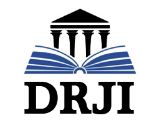Exploration of Data Mining Techniques in Business Decision-Making
Abstract
This research examines the use of data mining techniques in business decision-making. By analyzing various data mining methods such as classification, clustering, and association, the study demonstrates how data mining can enhance operational efficiency and marketing strategies. The literature review provides insights into the practical applications and benefits of data mining across different industries. The research highlights the potential of data mining to uncover hidden patterns and trends in large datasets, which can be used to make more informed and timely business decisions. Additionally, the study identifies key challenges in implementing data mining, such as data integration, selecting appropriate algorithms, and interpreting results. The findings are expected to offer practical guidance for companies aiming to leverage data mining in their operations. By understanding the advantages and applications of data mining, businesses can improve their decision-making processes, optimize resource allocation, and develop more effective strategies. This research serves as a valuable resource for organizations looking to harness the power of data mining to gain a competitive edge in the market.
Keywords
Full Text:
PDFReferences
Berry, M. J. A., & Linoff, G. S. (2004). Data Mining Techniques: For Marketing, Sales, and Customer Relationship Management. John Wiley & Sons.
Breiman, L. (2001). Random forests. Machine Learning, 45(1), 5-32. doi:10.1023/A:1010933404324
Fayyad, U., Piatetsky-Shapiro, G., & Smyth, P. (1996). From data mining to knowledge discovery in databases. AI Magazine, 17(3), 37-54.
Han, J., Kamber, M., & Pei, J. (2011). Data Mining: Concepts and Techniques. Elsevier.
Hastie, T., Tibshirani, R., & Friedman, J. (2009). The Elements of Statistical Learning: Data Mining, Inference, and Prediction. Springer.
Idris, A., Rizwan, M., & Khan, A. (2012). Churn prediction in telecommunication industry using rough set approach. Journal of Information Processing Systems, 8(1), 71-88.
Lin, W. C., Alvarez, S. A., & Ruiz, C. (2002). Efficient adaptive-support association rule mining for recommender systems. Data Mining and Knowledge Discovery, 6(1), 83-105.
Provost, F., & Fawcett, T. (2013). Data Science for Business: What You Need to Know about Data Mining and Data-Analytic Thinking. O'Reilly Media.
Quinlan, J. R. (1993). C4.5: Programs for Machine Learning. Morgan Kaufmann.
Rygielski, C., Wang, J. C., & Yen, D. C. (2002). Data mining techniques for customer relationship management. Technology in Society, 24(4), 483-502.
Vapnik, V. N. (1995). The Nature of Statistical Learning Theory. Springer.
Witten, I. H., Frank, E., & Hall, M. A. (2016). Data Mining: Practical Machine Learning Tools and Techniques. Morgan Kaufmann.
DOI: https://doi.org/10.46576/ijsseh.v5i2.4647
Article Metrics
Abstract view : 560 timesPDF – 245 times
Refbacks
- There are currently no refbacks.
Copyright (c) 2024 Zelvi Gustiana

This work is licensed under a Creative Commons Attribution-NonCommercial-ShareAlike 4.0 International License.
Dharmawangsa International Journal Indexed by:
Member Of :
Dharmawangsa: International Journal of the Social Sciences, Education and Humanitis Published By:
UNIVERSITAS DHARMAWANGSA
Alamat : Jl. K. L. Yos Sudarso No. 224 Medan
Kontak : Tel. 061 6635682 - 6613783 Fax. 061 6615190
Email : dharmawangsajournal@dharmawangsa.ac.id
Dharmawangsa:International Journal of the Social Sciences, Education and Humanitis by Universitas Dharmawangsa Medan is licensed under a Creative Commons Attribution-NonCommercial-ShareAlike 4.0 International License.
Based on a work at: https://jurnal.dharmawangsa.ac.id/index.php/dharmawangsa/index

11.jpg)
















